Blizzard Formation
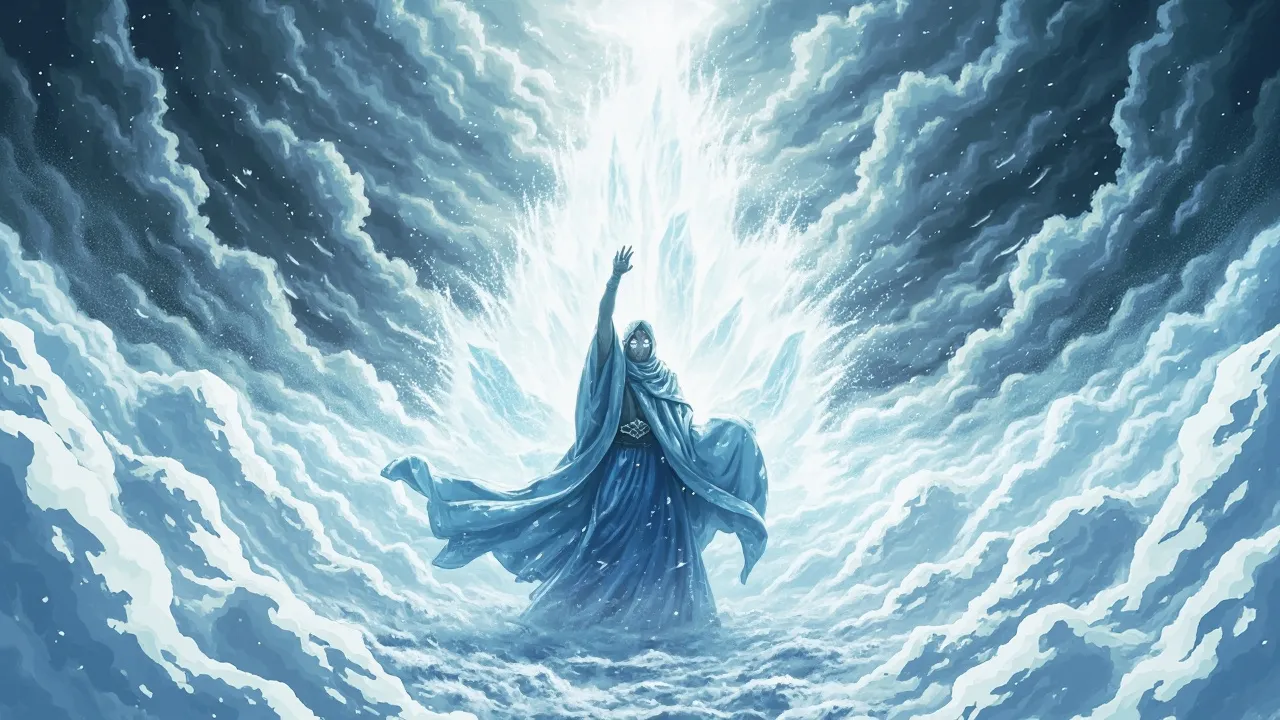
Blizzard Formation Video Demo 🎬
Table of Contents
- Blizzard Formation Video Demo 🎬
- What Is Blizzard Formation
- Core abilities of Blizzard Formation
- Application / Tactical Advantages in Combat
- Level: Level 1 🏙️, Level 2 🌇, Level 3 🌃
- Limitations of using the Blizzard Formation
- Weakness against what other superpowers
- Synergistic Power Combos
- Known Users
Blizzard Formation is the superpower to conjure a full-scale snowstorm on command—compressing cold, wind, and moisture into a controlled whiteout. Wielders of Blizzard Formation use cryokinesis, wind manipulation, and pressure control to create blinding snowfall, slicing ice shards, and paralyzing chill. This entry breaks down what the power is, how it works in combat, its levels, limitations, counters, and clever synergies. For a broader view of abilities, browse the complete superpower wiki, or discover a new character concept with the random superpower generator.
What Is Blizzard Formation
Blizzard Formation is a specialized branch of weather manipulation focused on rapid snowstorm generation. Instead of broadly affecting all atmospheric conditions, the user compresses a tight triad of effects:
-
Temperature reduction that triggers freezing conditions and frostbite risk
-
High-velocity gusts that produce whiteout visibility and wind-chill
-
Hydrometeor control that packs air with snow, sleet, or hail
In narrative terms, Blizzard Formation sits at the crossroads of hydrokinesis (controlling water and vapor), aerokinesis (controlling wind and pressure), and glaciokinesis (shaping ice). Practitioners can unleash localized squalls for stealth and control or scale up to area-denying superstorms. Because the technique blends temperature control with microclimate engineering, it is one of the most versatile crowd-control powers in cold-themed arsenals.
Core abilities of Blizzard Formation
Microclimate ignition
The user seeds a storm by rapidly cooling moist air and dropping local pressure, forcing vapor to condense and crystallize. This “ignition” produces snowfall in seconds and can be tuned to powder snow, sticky wet snow, sleet, or hail.
Dynamic windfield shaping
Through wind manipulation, the wielder creates a cyclonic flow that sustains snowfall and distributes it. Varying shear and turbulence allows for spiraling walls of snow, razor-like drift edges, or sudden gust fronts that shove enemies off balance.
Whiteout and sensory suppression
Dense, wind-driven snow reduces visibility to near zero, jams laser sights, and muffles sound. This white-noise snowscreen disorients foes, breaks formations, and masks movement, functioning as both camouflage and disruption.
Thermal drain and freezing aura
A localized temperature plunge inflicts cold stress, chills electronics, and makes surfaces treacherous. The freezing aura can rim objects with rime ice, seize mechanical joints, and sap stamina—especially effective in prolonged engagements.
Cryokinetic shaping and terrain control
Within the storm, the user can extrude ice spears, armor plates, bridges, and barricades. Black ice slicks, knee-deep drifts, and cornices reshape the battlefield, controlling chokepoints and dictating routes.
Precipitation tuning: sleet, hail, and graupel
Switching from fluffy snow to sleet or hail increases kinetic impact. Pellet density can be dialed up to suppress charging opponents or to batter drones and light vehicles.
Acoustic and signal dampening (situational)
Heavy snowfall and wind scatter light and radio signals and dampen acoustics, degrading thermal optics and reducing effective communication ranges—especially in urban canyons.
Storm mobility
Advanced users “ride” their own storm, letting gale force winds propel them, or forming ice skates and sleds for quick repositioning. In terrain with metal rails or smooth stone, an ice film can enable swift glides and evasive maneuvers.
Application / Tactical Advantages in Combat
Area denial and battlefield partitioning
A blizzard wall splits enemy lines, shields retreats, and isolates priority targets. Whiteout corridors funnel adversaries into traps, while drifted berms impede vehicles. Hail bursts can force aerial units to higher, less effective altitudes.
Stealth, misdirection, and ambush
Within the swirling snow, footfalls are silent, muzzle flashes vanish, and silhouettes blur. Decoys sculpted from ice can mimic allies, drawing fire away from real positions.
Crowd control and stamina attrition
Wind-chill, reduced footing, and constant sleet degrade morale and endurance. Frost-encrusted weapons jam, optics fog, and batteries drain faster—shifting the time advantage to the blizzard user.
Anti-projectile and anti-sensor screening
Dense snowfall alters ballistic trajectories of lighter projectiles, while sleet curtains scatter lasers and degrade targeting systems. Even high-tech sensors struggle in a maintained whiteout.
Precision strikes inside chaos
While others are blind, the user can anchor sightlines with cryokinetic “spines” that act like periscopes or sonic beacons, enabling accurate flanks and synchronized pushes.
Environmental rescue & non-lethal options
By easing wind and temperature gradients, the wielder can stabilize an avalanche-prone slope or build temporary ice shelters. Non-lethal takedowns include immobilizing ice-cuffs and drift entombment with breathable cavities.
Level: Level 1 🏙️, Level 2 🌇, Level 3 🌃
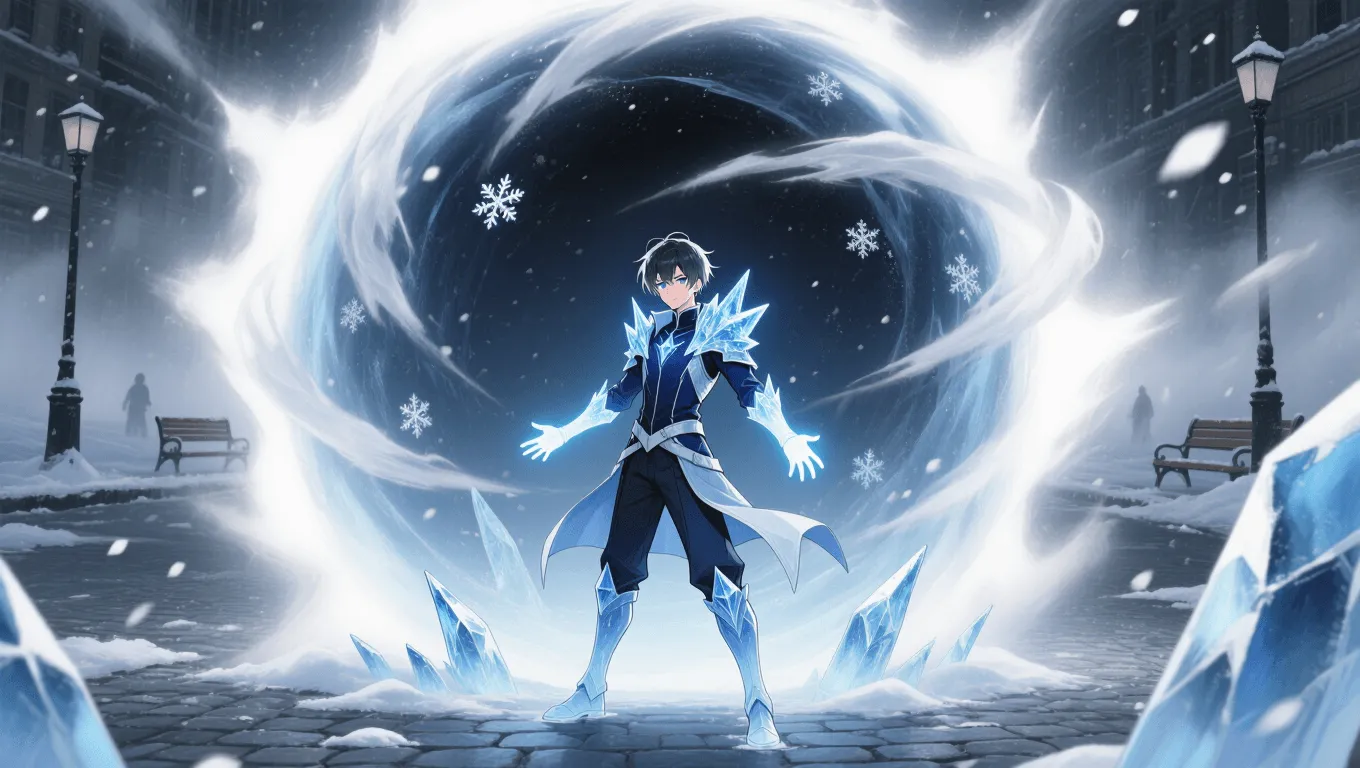
Level 1 — Localized Squall (Novice)
-
Radius: Up to a 20–30 m sphere around the user
-
Effects: Light-to-moderate snowfall, gusts to disorient, thin ice sheets
-
Tools: Short-lived whiteout bursts, ice caltrops, basic ice armor for protection
-
Use cases: Escape, skirmish control, stealth entries, quick cover
-
Risks: Visible plume may reveal presence; overcooling drains stamina
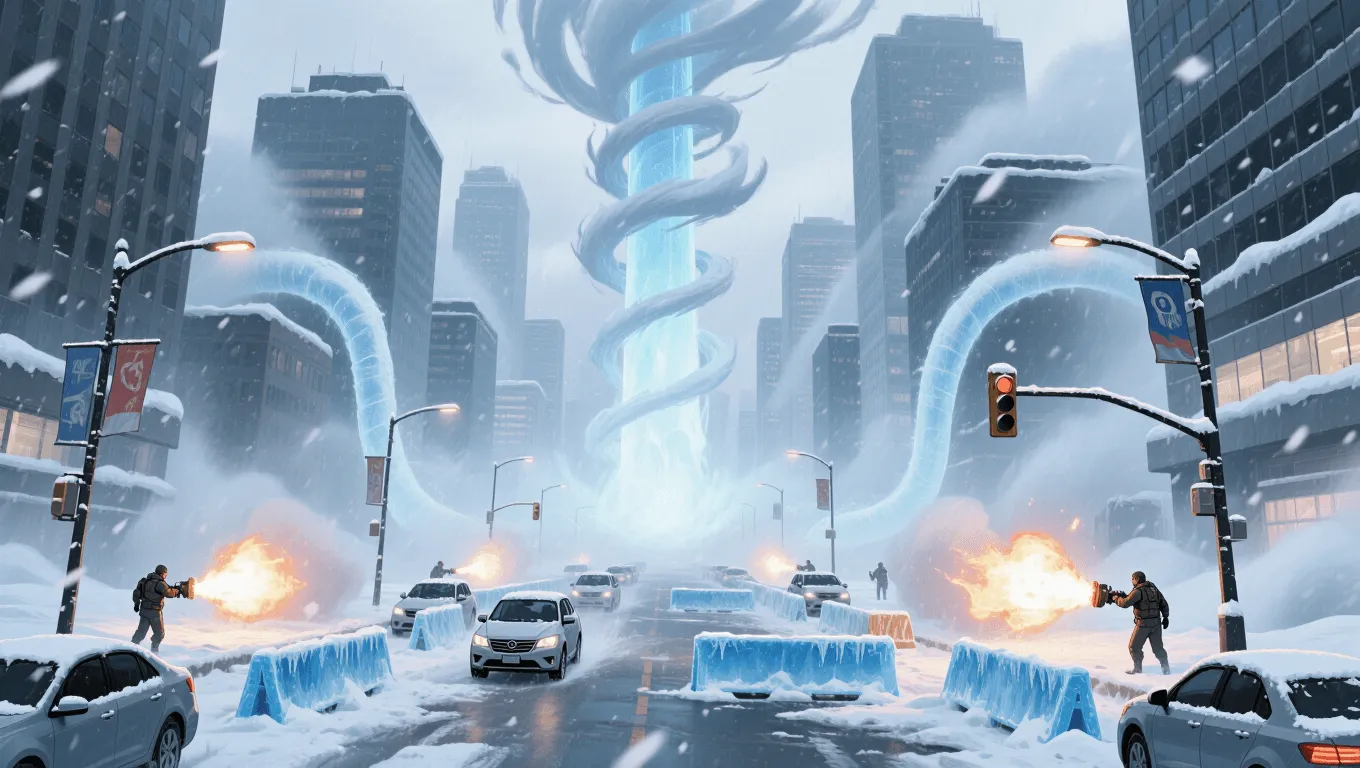
Level 2 — Urban Whiteout (Adept)
-
Radius: City block to small district; persistent storm core
-
Effects: Sustained heavy snow, sleet conversion, directional wind tunnels
-
Tools: Reinforced ice barricades, hail suppression fire, terrain sculpting
-
Use cases: Area denial, siege defense, convoy protection, pursuit interdiction
-
Risks: Collateral property damage, friendly-fire slip hazards, sensor blackout complicates ally coordination
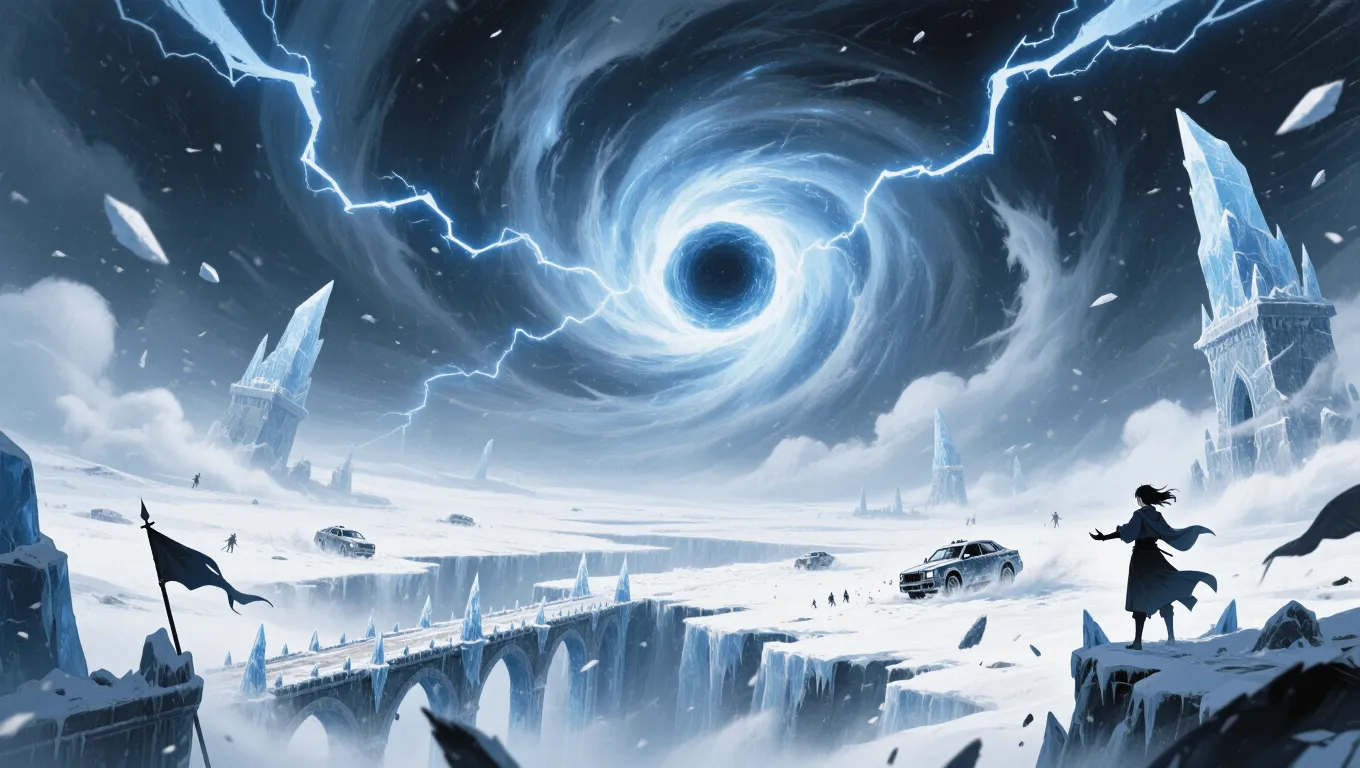
Level 3 — Cataclysmic Blizzard (Master)
-
Radius: Multi-kilometer footprint with moving storm-eye control
-
Effects: Extreme temperature drop, hurricane-force gusts, thunder-snow potential
-
Tools: Mobile stormfront, ice architecture (bridges, bastions), shock microbursts to disperse air support
-
Use cases: Strategic battlefield reshaping, fortress assaults, mass evacuation cover
-
Risks: Severe hypothermia risk to noncombatants, infrastructure failure, uncontrolled escalation if moisture/pressure feedback loops amplify beyond the user’s fine control
Limitations of using the Blizzard Formation
-
Moisture dependency: Arid or super-dry conditions limit snow yield; users may need to pull vapor from bodies of water or humid air to maintain density.
-
Heat sinks and thermal inertia: Urban heat islands, volcanic terrain, or active fires resist temperature drops, forcing higher energy expenditure.
-
Sustained concentration cost: Keeping windfields coherent while shaping ice structures taxes focus; prolonged storms lead to fatigue and slower reactions.
-
Collateral and visibility risks: Whiteouts endanger allies, civilians, and pilots; navigation becomes hazardous even for the user if anchors are lost.
-
Electrical and structural vulnerabilities: Heavy ice loads can snap lines and collapse roofs; unintended damage may alter mission parameters.
-
Equipment interference: The freezing aura can hinder friendly electronics unless gear is winterized, increasing logistics overhead.
-
Backlash from pressure mismanagement: Rapid pressure changes can trigger unintended microbursts or avalanches in mountainous regions.
Weakness against what other superpowers
-
Pyrokinesis / thermal manipulation: Heat blasts, plasma sheaths, or solar beams sublimate snow, melt ice structures, and neutralize the freezing aura.
-
Geokinesis (earth manipulation): Rapid earthworks, rubble fields, or salt/mineral dispersal destabilize ice surfaces and restore traction.
-
Aerokinesis specialists: A dedicated wind controller can shear apart the storm’s circulation, vent moisture, or redirect the whiteout harmlessly.
-
Electromagnetic or lightning overmatch: High-energy arcs can flash-melt pathways or superheat air columns, “punching holes” through snowfall; localized steam bursts disrupt visibility anchors.
-
Hydrokinesis with phase bias toward liquid: Warm rain curtains or directed warm currents erode drifts and collapse brittle ice fortifications.
-
Vibration/sonic disruption: Resonance tuned to ice crystal lattices fractures large structures (bridges, plates) and reduces hail cohesion.
-
Teleportation and phasing: Mobility powers bypass terrain denial entirely, negating the user’s spatial control advantage.
Synergistic Power Combos
- Aerokinesis + Blizzard Formation: Pairing with a pure wind controller yields razor-precise storm walls, targeted downdrafts, and safe corridors for allies.
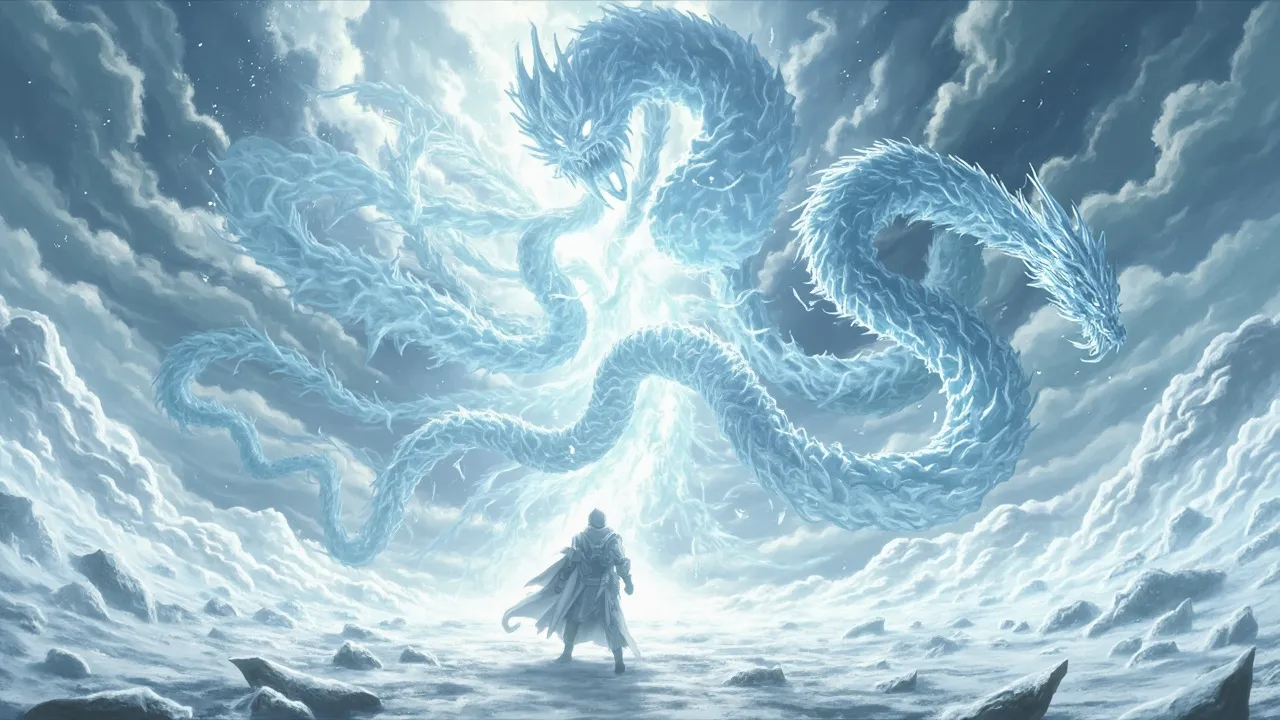
- Hydrokinesis + Blizzard Formation: Water summoners provide abundant vapor to scale storms in dry zones, enabling dense snow bands and sustained hail.
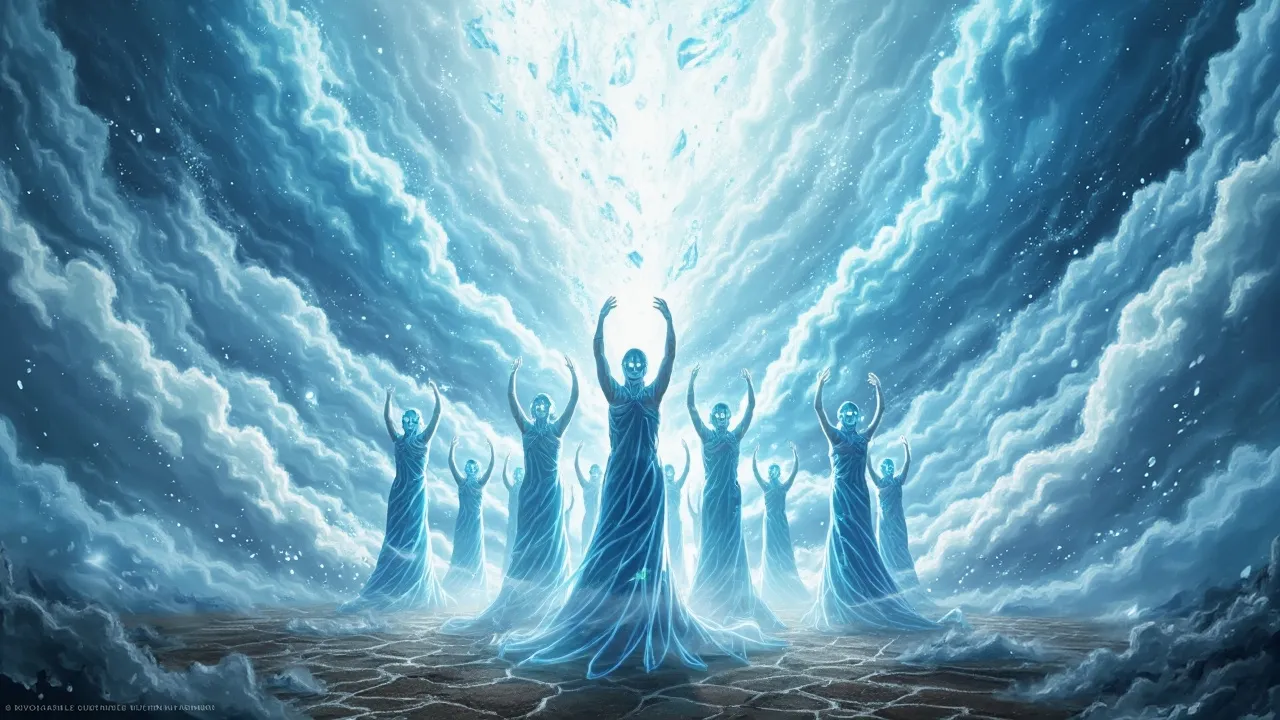
- Shadow manipulation + Whiteout: In a blinding squall, shadow-walkers move unseen; the storm supplies contrast and cover for perfect ambushes.
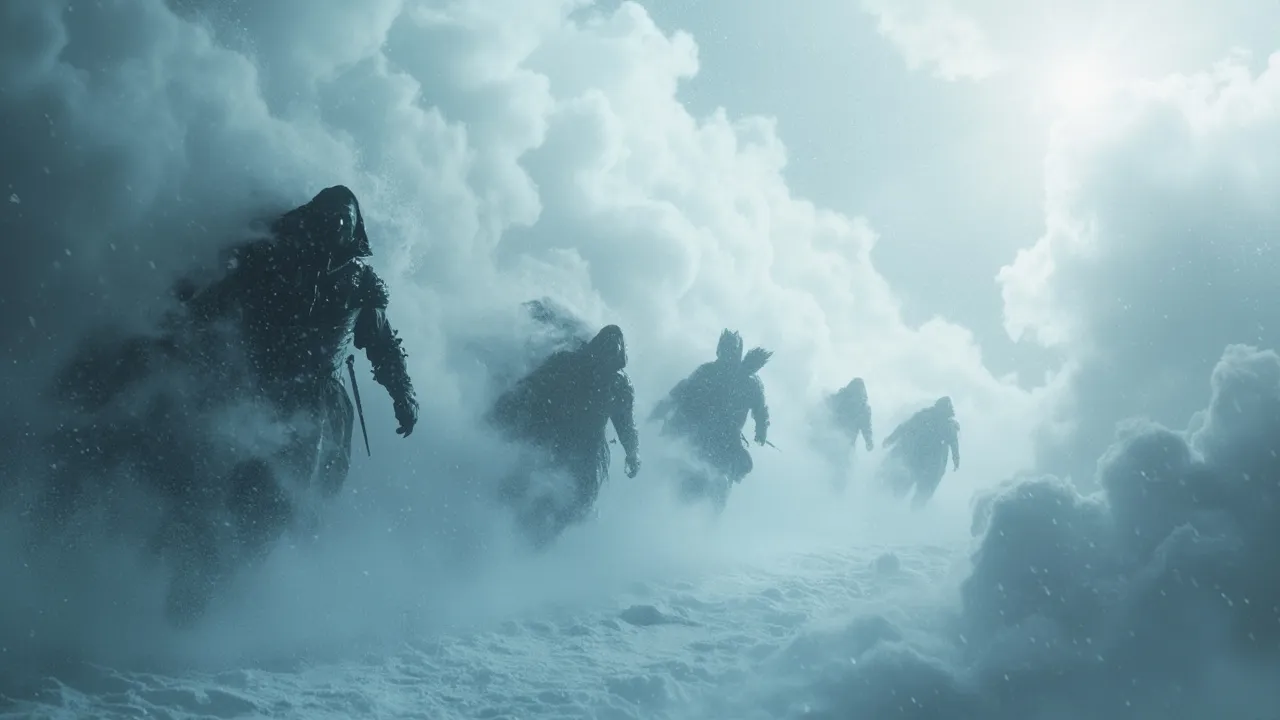
- Seismokinesis + Ice architecture: Ground tremors funnel enemies into pre-iced trenches; ice buttresses stabilize shifting rubble during rescues.
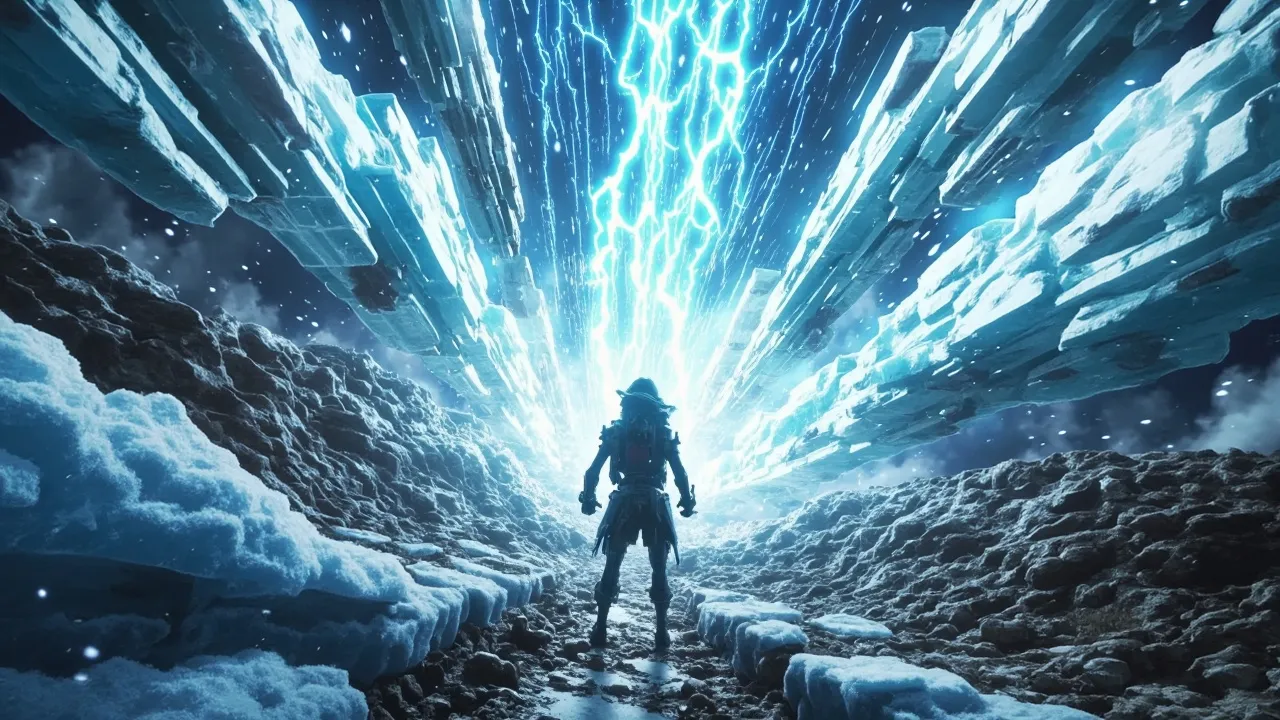
- Technopathy + Cryo-engineering: Smart drones seed nuclei, map airflow, and relay thermal beacons, giving the blizzard wielder HUD-level precision inside the storm.
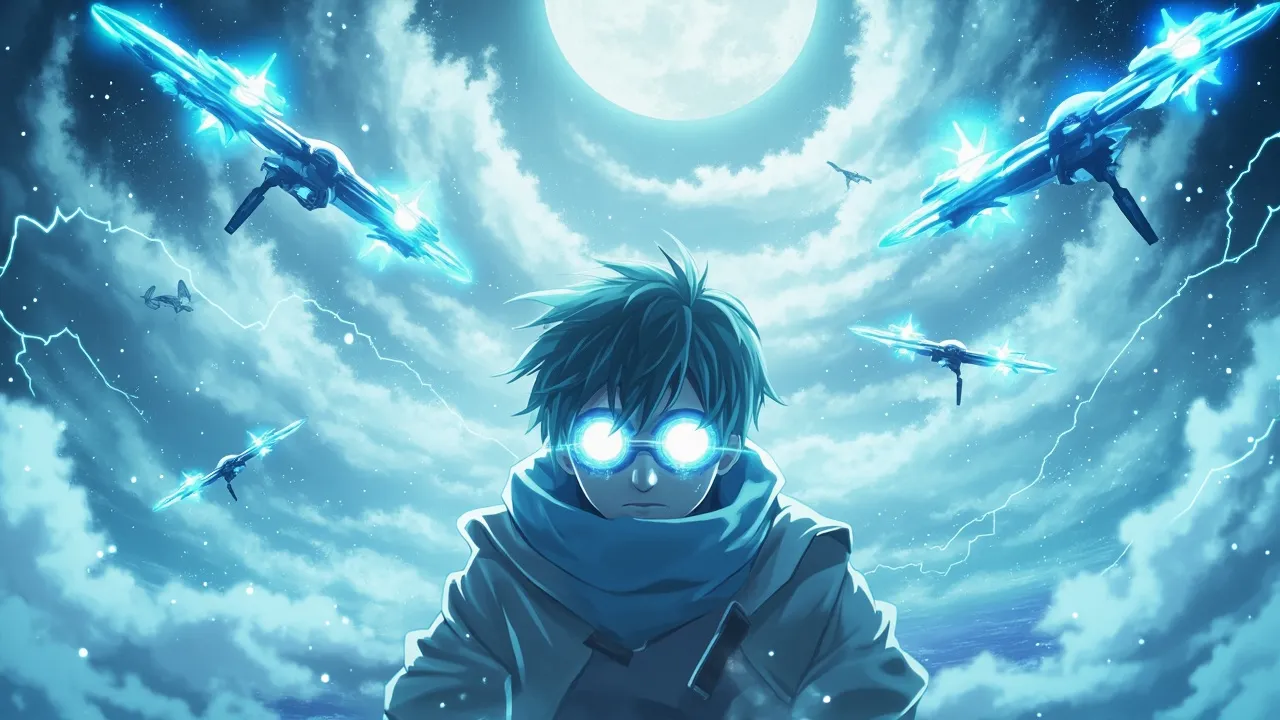
- Sound manipulation + Snow medium: Snow is an excellent muffler; sonic allies can confine concussive waves within a storm cell for directional, non-lethal knockdowns.
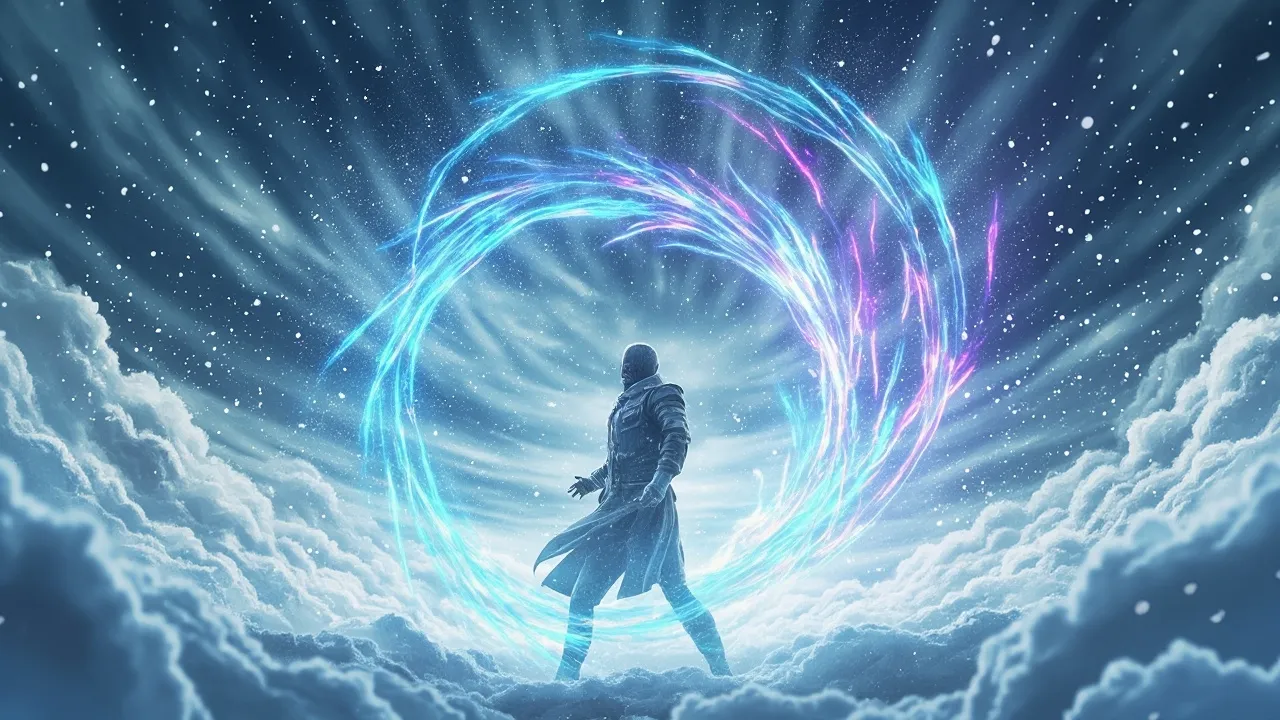
- Illusion casting + Whiteout veil: Visual illusions become harder to debunk when every silhouette is already distorted by blowing snow.
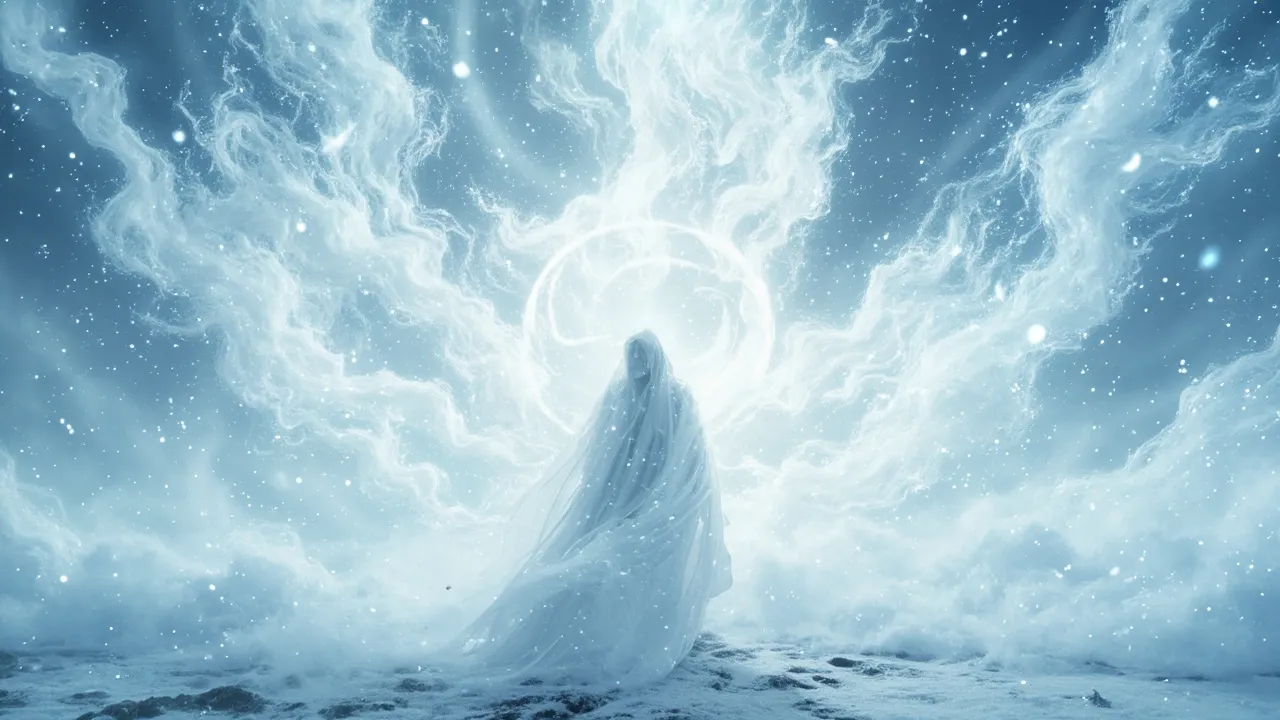
Known Users
-
Iceman (Bobby Drake) — A premier cryokinetic who often escalates from ice constructs to full storm-level effects when conditions permit.
-
Storm (Ororo Munroe) — A master of weather manipulation capable of blizzards, whiteouts, and thunder-snow with surgical control.
-
Killer Frost — Multiple incarnations exhibit extreme cold generation and localized stormcraft to immobilize opponents.
-
Snowbird — A weather-influencing demigoddess who has displayed cold-weather storm shaping in northern terrains.
Looking for more abilities that pair well with Blizzard Formation? Explore the full catalog in our superpower wiki, or spark character ideas with the random superpower generator.
